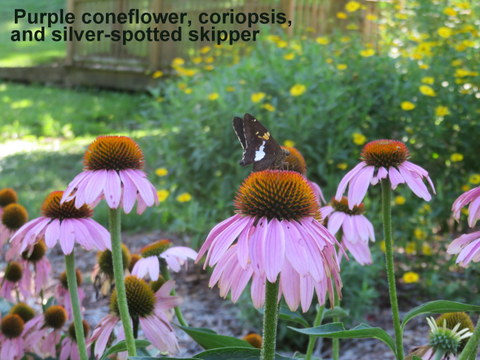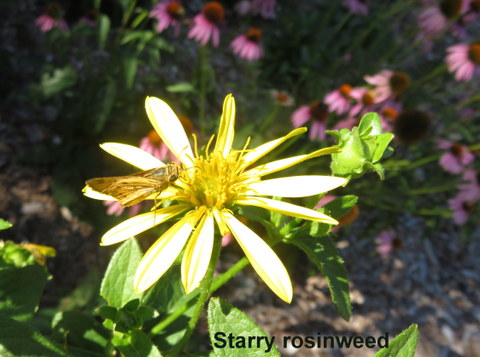George St. Park is in an uncut street right-of-way. It has a small but fairly bio-diverse wetland and is the home of Oxford's arboretum. People will find the bat boxes, and,of course, the Pollinator Garden, as well as a pleasant gazebo in
which to sit.
Oxford’s Pollinator Garden at George St. ParkOxford’s first pollinator garden, located in the city
right-of-way near the college, between Wesley St. and Asbury St., is planted
with regionally-native, flowering pollinator plants. All the plants are perennial, coming back
year after year, providing nectar and habitat for butterflies, hummingbirds,
bees, etc.
The garden will take another year or so to mature, and a few
plants still must be installed. However,
the blooms so far this year have been fantastic! We’ve seen various pollinators busy in the
garden, including honey bees, butterflies, and hummingbirds. We also have seen goldfinches snacking on the
seeds of the early spring blooms, now gone to seed.
We hope you will stop by and see, if you are out for a walk in the area.
 
 Bats in Oxford Bats in OxfordYou may have noticed the boxes mounted on tall poles in the
George St. Park, between Clark St. and Oxford College. These are bat houses. Georgia bats
are endangered and the city of Oxford is trying to help. Usually bats like to roost under the loose
bark of dead trees. In a modern
landscape, humans have removed much of the natural habitat of these beneficial
mammals. In addition, bats are voracious
insect eaters. A single bat is can eat
up to 8000 mosquitoes in one night! So,
bats living in George St. Park help make outdoor life throughout Oxford more
pleasant. They are an important player
in the food chain; without them, there would be far more insects, including
ones that damage crops and carry disease.To learn more about bats, visit https://georgiawildlife.com/GeorgiaBats
To build your own bat house, visit https://georgiawildlife.com/BatHouses
|
|
|